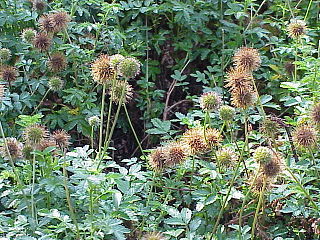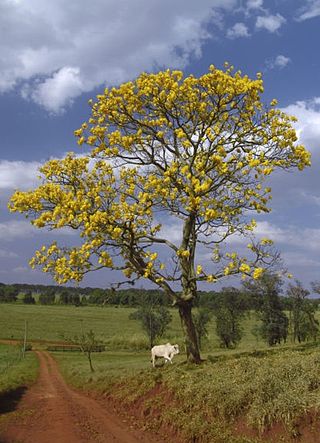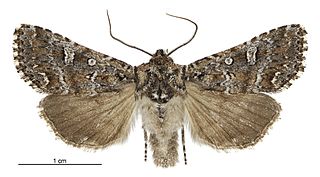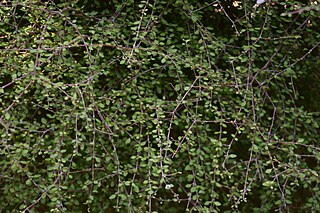
Coprosma robusta, commonly known as karamū, is a flowering plant in the family Rubiaceae that is endemic to New Zealand. It can survive in many climates, but is most commonly found in coastal areas, lowland forests, or shrublands. Karamū can grow to be around 6 meters tall, and grow leaves up to 12 centimeters long. Karamū is used for a variety of purposes in human culture. The fruit that karamū produces can be eaten, and the shoots of karamū are sometimes used for medical purposes.

Acaena is a genus of about 60 species of mainly evergreen, creeping herbaceous perennial plants and subshrubs in the family Rosaceae, native mainly to the Southern Hemisphere, notably New Zealand, Australia and South America, but with a few species extending into the Northern Hemisphere, north to Hawaii and California.

There are a number of Australian species that have become invasive when introduced into outside Australia or outside Oceania.

The flora of Venezuela consists of a huge variety of unique plants; around 38% of the estimated 30,000 species of plants found in the country are endemic to Venezuela. Overall, around 48% of Venezuela's land is forested; this includes over 60% of the Venezuelan Amazon. These rainforests are increasingly endangered by mining and logging activities.

Acaena novae-zelandiae, commonly known as red bidibid, bidgee widgee, buzzy and piri-piri bur, is a small herbaceous, prostrate perennial, native to New Zealand, Australia and New Guinea, of the family Rosaceae.

Laurus azorica, the Azores laurel or Macaronesian laurel, is a small, evergreen tree in the laurel family (Lauraceae), found only on the Azores island group in the North Atlantic.

Acaena dumicola is a species of perennial plant found only in scrubby and rocky habitats at altitudes of between 300 and 1200 m in the South Island of New Zealand.
Acaena emittens is a species of perennial plant limited to scrubland and forest clearings at an altitude of 450–1500 m in central North Island, New Zealand.

Acaena rorida is a species of mat-forming perennial plant known only from grassy uplands on the Mangaohane Plateau in the northwestern part of the Ruahine Range in the North Island of New Zealand.
Acaena tesca is a species of low growing perennial plant restricted to the upper slopes of the mountains of central Otago and northern Southland in the South Island of New Zealand.

Rubus schmidelioides, commonly called bush lawyer or white leaved lawyer, is a climbing plant species found commonly in New Zealand. It is given the Māori name tātarāmoa which refers to the feet of the rooster. Its hooked branches allow it to climb across the ground and into shrubs and trees. R.schmidelioides fruit are yellow to orange.

Acaena magellanica, commonly called buzzy burr or greater burnet, is a species of flowering plant whose range includes the southern tip of South America and many subantarctic islands.
Some species endemic to New Zealand are causing problems in other countries, similar to the way introduced species in New Zealand cause problems for agriculture and indigenous biodiversity.

Ichneutica lithias is a moth of the family Noctuidae. This species is endemic to New Zealand. It is a small moth but distinctive as a result of the markings on its forewings. Although this species is widespread in the South Island, it has only been collected in the Rangipo Desert in the North Island. The species prefers habitat that is scrubland ranging in altitude from coastal to alpine. Adults are on the wing from October to April and larvae have been collected and reared on the New Zealand endemic plant species Melicytus alpinus.

Epichorista aspistana is a species of moth of the family Tortricidae. It is endemic to New Zealand and has been collected in Canterbury and Otago. This species inhabits moist grassy areas at altitudes ranging from sea level to 1650m. Larvae feed on species within the genus Acaena. Adults are on the wing in November to February.

Myrsine divaricata also known as weeping māpou or weeping matipo, is a small tree up to 4 metres (13 ft) tall or often a shrub. It has a strongly divaricating habit with interlaced branches. The woody parts are stiff and pubescent when young. The small leathery simple leaves are borne on short petioles and may be slightly two lobed at the end. The very small yellow or reddish flowers may be borne singly or in small groups which mature into small purple, occasionally white, fruit.

Coprosma virescens is an endemic New Zealand plant in the genus Coprosma of the family Rubiaceae. Its Māori name is mingimingi, a name which is also applied to closely related species such as C. dumosa, C. rhamnoides, C. propinqua and C. crassifolia. It is a small-leaved shrub or tree which grows 2 to 3 metres high. It has very slender, more or less glabrous divaricating branches. The small leaves are petiolate with petioles from 2mm to 5mm long. The leaves narrow suddenly at the petiole and may be up to 9 millimetres (0.35 in) long and 6 millimetres (0.24 in) wide with wavy margins or a few blunt teeth throughout South Island in lower montane forest and scrubland. The apetalous male flowers occur in axillary clusters of one to two on very short branches. Female flowers are found on their own at the ends of short branchlets.

The Santa Marta páramo (NT1007) is an ecoregion containing páramo vegetation above the treeline in the Sierra Nevada de Santa Marta mountain range on the Caribbean coast of Colombia. The isolated position of the range has allowed unique species to evolve. Some are related to those found in Central America and the Caribbean coastal areas, and some to species from the Andes. The habitat is relatively stable, but has been drastically changed from the original by long-term human activity.

Acaena microphylla, the bidibid or piripiri, and outside New Zealand, New Zealand-bur, is a small herbaceous, prostrate perennial flowering plant in the rose family Rosaceae, native to both the North and South Islands of New Zealand. There are two varieties:

Acaena inermis, the spineless acaena, is a species of flowering plant in the family Rosaceae, endemic to New Zealand and introduced to Great Britain. A mat-forming perennial useful as a ground cover, its cultivar 'Purpurea' is widely available from commercial suppliers.

















